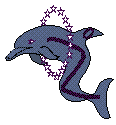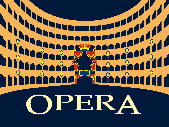Mu primary dataset in AOD format from RunB of 2010 (/Mu/Run2010B-Apr21ReReco-v1/AOD)
/Mu/Run2010B-Apr21ReReco-v1/AOD, CMS collaboration
Cite as: CMS collaboration (2014). Mu primary dataset in AOD format from RunB of 2010 (/Mu/Run2010B-Apr21ReReco-v1/AOD). CERN Open Data Portal. DOI:10.7483/OPENDATA.CMS.B8MR.C4A2
Data recorded in 2010 and published in 2014Dataset Collision CMS 7TeV pp CERN-LHC
Description
Mu primary dataset in AOD format from RunB of 2010
The list of validated runs, which must be applied to all analyses, can be found in
CMS list of validated runs Cert_136033-149442_7TeV_Apr21ReReco_Collisions10_JSON_v2.txt
Dataset characteristics
32376291 events. 2979 files. 2.9 TiB in total.System details
FT_R_42_V10A::AllCMSSW_4_2_8
Recommended container image for analyses is available in the following locations (see guide):
docker.io/cmsopendata/cmssw_4_2_8-slc5_amd64_gcc434:latestgitlab-registry.cern.ch/cms-cloud/cmssw-docker-opendata/cmssw_4_2_8-slc5_amd64_gcc434:latest
How were these data selected?
There are four categories of triggers in the Mu dataset (with significant overlaps):
~70% inclusive single muon triggers with varying trigger pt threshold 3,5,7,9,11,13,15,17,19,21 GeV plus a few with loosened quality cuts.
~20% isolated single muon triggers with varying trigger pt threshold 9,11,13,15,17 GeV.
~10% inclusive dimuon triggers with varying trigger pt threshold 3,5 GeV plus one Z->mumu trigger with loosened quality cuts.
~20% combinations of muon triggers with various pt thresholds 3,5,7,8,9,11 GeV with some EM/e/gamma or hadronic/jet energy deposit with thresholds 6-100 GeV.
Data taking / HLT
The collision data were assigned to different RAW datasets using the following HLT configuration.
Data processing / RECO
This primary AOD dataset was processed from the RAW dataset by the following step:
Step: RECO
Release: CMSSW_4_2_1_patch1
Global tag: FT_R_42_V10A::All
The configuration file for RECO step can be generated with the cmsDriver command line script in the corresponding CMSSW release area:
cmsDriver.py reco -s RAW2DIGI,L1Reco,RECO --data --conditions FT_R_42_V10A::All --eventcontent AOD --no_exec --python reco_cmsdriver2010.py
HLT trigger paths
The possible HLT trigger paths in this dataset are:
HLT_DoubleMu3
HLT_DoubleMu3_HT50U
HLT_DoubleMu5
HLT_IsoMu11
HLT_IsoMu13
HLT_IsoMu15
HLT_IsoMu17
HLT_IsoMu3
HLT_IsoMu9
HLT_IsoMu9_PFTau15
HLT_L1Mu14_L1ETM30
HLT_L1Mu14_L1SingleEG10
HLT_L1Mu14_L1SingleJet6U
HLT_L1Mu20
HLT_L1Mu30
HLT_L2DoubleMu20_NoVertex
HLT_L2Mu11
HLT_L2Mu15
HLT_L2Mu25
HLT_L2Mu5_Photon9_L1R
HLT_L2Mu9
HLT_Mu11
HLT_Mu11_Ele8
HLT_Mu11_PFTau15
HLT_Mu13
HLT_Mu15
HLT_Mu17
HLT_Mu19
HLT_Mu20_NoVertex
HLT_Mu21
HLT_Mu3
HLT_Mu30_NoVertex
HLT_Mu3_Ele8_HT70U
HLT_Mu5
HLT_Mu5_Ele13
HLT_Mu5_Ele17
HLT_Mu5_Ele5
HLT_Mu5_Ele9
HLT_Mu5_HT100U
HLT_Mu5_HT50U
HLT_Mu5_HT70U
HLT_Mu5_Jet35U
HLT_Mu5_Jet50U
HLT_Mu5_Jet70U
HLT_Mu5_MET45
HLT_Mu5_Photon11_Cleaned_L1R
HLT_Mu5_Photon9_Cleaned_L1R
HLT_Mu7
HLT_Mu7_Photon13_Cleaned_L1R
HLT_Mu8_Ele8
HLT_Mu9
How were these data validated?
During data taking all the runs recorded by CMS are certified as good for physics analysis if all subdetectors, trigger, lumi and physics objects (tracking, electron, muon, photon, jet and MET) show the expected performance. Certification is based first on the offline shifters evaluation and later on the feedback provided by detector and Physics Object Group experts. Based on the above information, which is stored in a specific database called Run Registry, the Data Quality Monitoring group verifies the consistency of the certification and prepares a json file of certified runs to be used for physics analysis. For each reprocessing of the raw data, the above mentioned steps are repeated. For more information see:
CMS data quality monitoring: Systems and experiences
The CMS Data Quality Monitoring software experience and future improvements
The CMS data quality monitoring software: experience and future prospects
How can you use these data?
You can access these data through the CMS Virtual Machine. See the instructions for setting up the Virtual Machine and getting started in
Files and indexes
Disclaimer
These open data are released under the Creative Commons Zero v1.0 Universal license.
Neither the experiment(s) ( CMS ) nor CERN endorse any works, scientific or otherwise, produced using these data.
This release has a unique DOI that you are requested to cite in any applications or publications.







